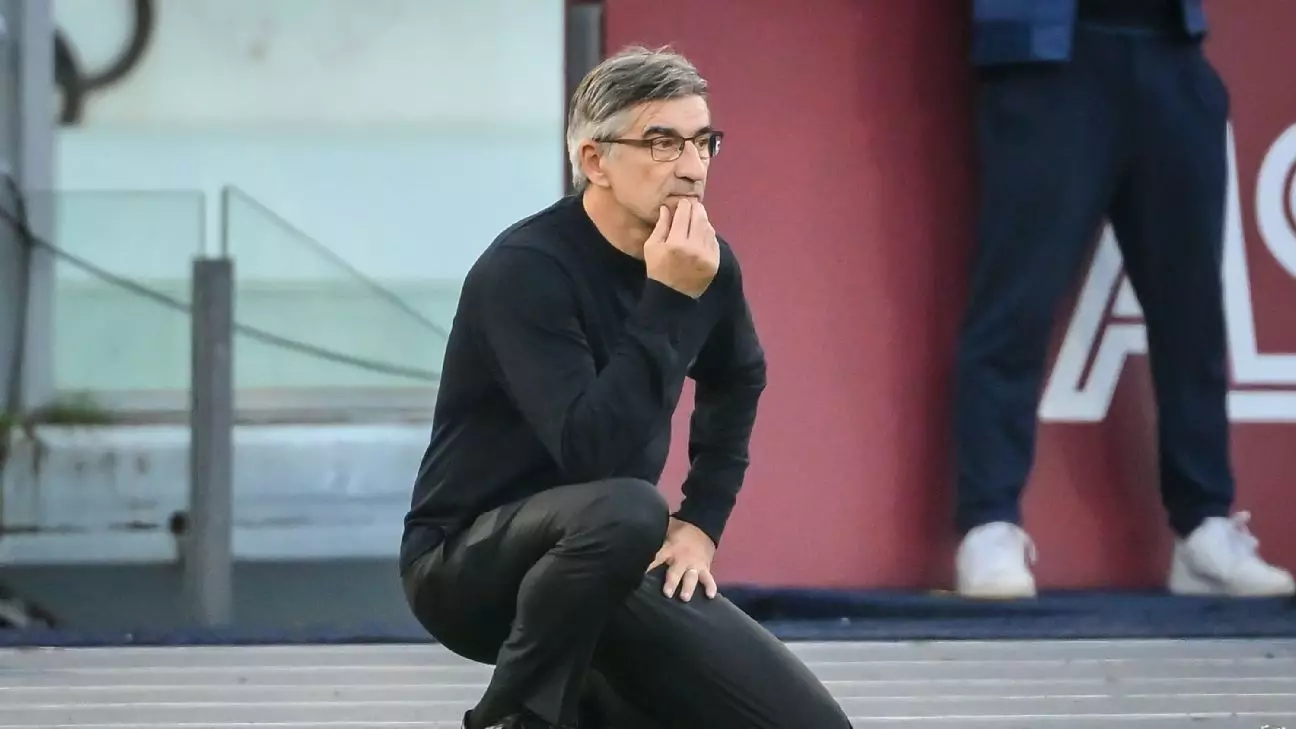AS Roma has found itself in choppy waters once again. Following a disappointing defeat at home to Bologna that marked their fourth loss in five matches, the club decided to part ways with head coach Ivan Juric. This marked the second managerial dismissal of the current Serie A season, and it raises important questions about the club’s direction, strategic decisions, and the underlying issues plaguing the squad.
The immediate response to Juric’s sacking has been mixed, as football clubs often face backlash for such abrupt changes. Roma released a statement thanking Juric for his efforts, highlighting his professionalism during challenging circumstances. However, one cannot overlook the fact that the downward trajectory of results cannot simply be brushed aside with commendations. With the club languishing in 12th place in the league, it became painfully clear that Juric’s methods were failing to yield the desired results. After a promising start, which saw consecutive home wins against Udinese and Venezia, the momentum collapsed, illustrating a critical lack of adaptability.
While Juric initially seemed to build a solid foundation, football is a tactical evolution, and his man-to-man marking strategy clashed with the team’s more fluid, possession-oriented gameplay. This dissonance ultimately led to confusion on the pitch, with players appearing unable to execute his vision effectively. His tactical choices, specifically the 3-4-2-1 formation, were swiftly exploited by opposing teams that intelligently identified weaknesses in Roma’s setup.
The decision to appoint Juric reflects a broader trend in the club’s recent coaching history. After Daniele De Rossi’s short-lived tenure, which followed the removal of the revered José Mourinho, the continuous changes in leadership indicate instability within the club’s hierarchy. Juric’s appointment was intended to stabilize a tumultuous environment; however, it speaks to a broader problem of haphazard decision-making by upper management. The club appears in a reactive state, constantly scrambling to identify the right fit, rather than crafting a long-term vision that prioritizes alignment with both player skills and club identity.
To delve deeper into Juric’s coaching philosophy, it’s also critical to assess the impact of absence among key players. Star striker Paulo Dybala’s muscle strain during Juric’s last match against Bologna exemplifies how crucial injuries can impact a team’s performance. Despite creating multiple opportunities, Roma struggled to convert chances into goals, underlining the deepening crisis of confidence among the squad. A recurring theme throughout this coaching regime has been the reliance on key individuals, reflecting a lack of team cohesion and strength in depth.
With the decision to search for yet another head coach initiated, the spotlight now turns to who might step into the role. Reports suggest that former national team coach Roberto Mancini could be a candidate, which would mark a return to high-profile management for him. However, the real question remains: will the next appointment be a strategic move towards stability or merely a temporary fix to keep fans and media appeased?
Moreover, AS Roma must address the broader implications of its current situation. Sitting at 13 points after the first 12 Serie A games represents their worst start in two decades. With daunting fixtures against Napoli, Tottenham Hotspur, and Atalanta looming, the club needs to find someone who can swiftly instill a sense of tactical coherence and mental resilience in the players.
The true test facing Roma now is to not only navigate immediate challenges but also to build a sustainable, forward-thinking culture. Until a leadership figure emerges who can unify the squad and reinvigorate the fanbase, the team is likely to continue facing the same repetitive cycle of turmoil and instability that has unfortunately become their occupational hazard. The need for a comprehensive strategy, emphasizing long-term growth over quick fixes, could prove essential for AS Roma’s journey back to the upper echelons of Serie A.
